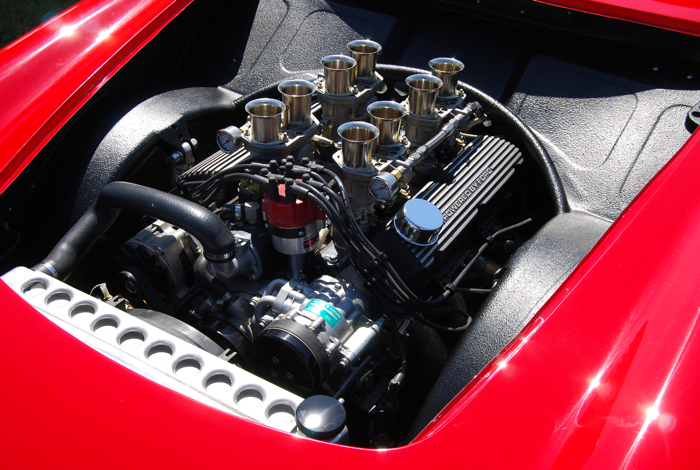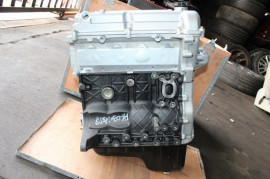Import Engines: Whatever You Required to Know Before Purchasing
Import Engines: Whatever You Required to Know Before Purchasing
Blog Article
Discovering the most recent Technological Technologies in Import Engines and How They Boost Driving Experience
In the world of auto engineering, the landscape of import engines is undertaking an extensive makeover driven by sophisticated technological developments. From the development of turbocharged engines to the integration of crossbreed modern technology, the most recent innovations are revolutionizing the driving experience in methods formerly unbelievable. As import makers push the boundaries of performance and performance via improved gas injection systems and innovative engine management remedies, the concern occurs: Just how do these advancements genuinely affect the means we engage with our cars on the road?

Advancement of Turbocharged Engines
In the auto sector, the development of turbocharged engines has dramatically transformed the landscape of performance and performance. Turbocharging, once mainly seen in high-performance sporting activities autos, has now end up being a mainstream innovation embraced by a large range of automobiles, from small hatchbacks to deluxe cars. The essential concept behind a turbocharged engine is simple yet reliable - by forcing even more air right into the burning chamber, it permits more gas to be shed, causing raised power result.
Among the crucial benefits of turbocharged engines is their capacity to provide even more power from smaller sized, a lot more fuel-efficient engines. This scaling down fad has resulted in a decrease in exhausts without compromising efficiency, making turbocharging an attractive choice for car manufacturers making every effort to meet rigid environmental regulations. Turbocharged engines offer boosted torque at lower RPMs, providing vehicle drivers with a much more dynamic and receptive driving experience.
As innovation remains to development, we can anticipate additional developments in turbocharging, bring about also greater degrees of performance and performance in the automotive sector.
Innovations in Gas Injection Systems
Modern fuel shot systems have actually evolved to deliver gas a lot more efficiently and specifically into the engine cyndrical tubes, enhancing total engine performance and fuel performance. One of the essential developments in fuel injection systems is the change from standard port fuel injection (PFI) to even more innovative straight gas shot (DFI) innovation.
In addition, the integration of digital control systems (ECUs) and sensing units in gas shot systems has allowed for real-time adjustments to fuel distribution based on different variables such as engine lots, temperature level, and driving conditions. Furthermore, innovations in fuel injector design, products, and spray patterns have added to cleaner burning and smoother engine procedure.
Integration of Hybrid Technology
The evolution of fuel shot systems in the direction of greater efficiency and efficiency has established the phase for the seamless combination of hybrid technology right into contemporary engines. Crossbreed technology incorporates using conventional internal combustion engines with electrical propulsion systems, providing boosted gas efficiency and minimized exhausts. By integrating electrical motors and batteries right into the powertrain, hybrid engines can supplement the internal burning engine throughout velocity or low-speed driving, consequently enhancing general performance.

Enhanced Engine Management Systems
What are the essential advancements in engine administration systems that are boosting the efficiency and efficiency of modern engines? Engine management systems have undergone substantial advancements to enhance engine efficiency and effectiveness. One key development is the assimilation of sophisticated sensing units that continually keep an eye on numerous specifications such as engine temperature level, air-fuel proportion, find more and exhaust emissions. These sensing units provide real-time information to the engine control device (ECU), enabling specific changes to be made to optimize burning procedures and fuel effectiveness.
Furthermore, modern-day engine management systems make use of advanced algorithms and man-made intelligence to analyze the data collected by sensors and make vibrant adjustments to elements such as ignition timing, gas injection, and turbocharger boost pressure. This level of precision and flexibility results in improved engine responsiveness, enhanced power result, and decreased gas intake.
Furthermore, engine management systems currently feature advanced diagnostic capacities that can identify and deal with concerns such as misfires, sensing unit breakdowns, and fuel system abnormalities in real-time, thereby improving overall engine reliability and longevity. These innovations in engine administration systems play an important duty in boosting the driving experience by delivering ideal performance, fuel efficiency, and reliability.
Impact of Lightweight Products
Including light-weight materials in engine production has reinvented the vehicle sector's method to boosting fuel performance and efficiency. Using materials such as carbon fiber, aluminum, and titanium has actually significantly reduced the overall weight of engines, leading to boosted power-to-weight ratios and boosted fuel economic situation. These light-weight materials use a greater strength-to-weight proportion contrasted to typical materials like steel, permitting better longevity without compromising performance.
One of the key benefits of utilizing lightweight products in engine building is the decrease of inertia, additional info leading to quicker engine feedback times and improved overall car dexterity. In addition, the lighter weight adds to decrease power intake, making lorries a lot more eco friendly by decreasing exhausts.
Furthermore, the application of light-weight materials in engine components such as pistons, linking poles, and crankshafts has actually made it possible for engineers to push the boundaries of efficiency without giving up reliability (import engines). This technology has led the method for more effective and reliable engines that deliver a remarkable driving experience while meeting stringent exhausts criteria
Verdict
Finally, the most recent technical developments in import engines have significantly boosted the driving experience. From the advancement of turbocharged engines to advancements in gas shot systems, integration of crossbreed innovation, boosted engine management systems, and the use of lightweight products, these developments have jointly enhanced performance, gas effectiveness, and overall driving characteristics. As innovation proceeds to development, we can expect also extra exciting advancements in the future of import engines.
Modern gas shot systems have progressed to deliver gas a lot more effectively and exactly into the engine cyndrical tubes, improving general engine efficiency and gas performance - import engines. By integrating electric motors and batteries into the powertrain, crossbreed engines can supplement the inner combustion engine throughout velocity or low-speed driving, consequently boosting general efficiency
What are the key improvements in engine administration systems that are enhancing the efficiency and performance of modern engines? Engine administration systems have undertaken significant improvements to optimize engine efficiency and effectiveness. From the evolution of turbocharged engines to developments in gas injection systems, assimilation of hybrid innovation, boosted engine administration systems, and the usage of light-weight products, these advancements have actually jointly boosted performance, fuel performance, and overall driving dynamics.
Report this page